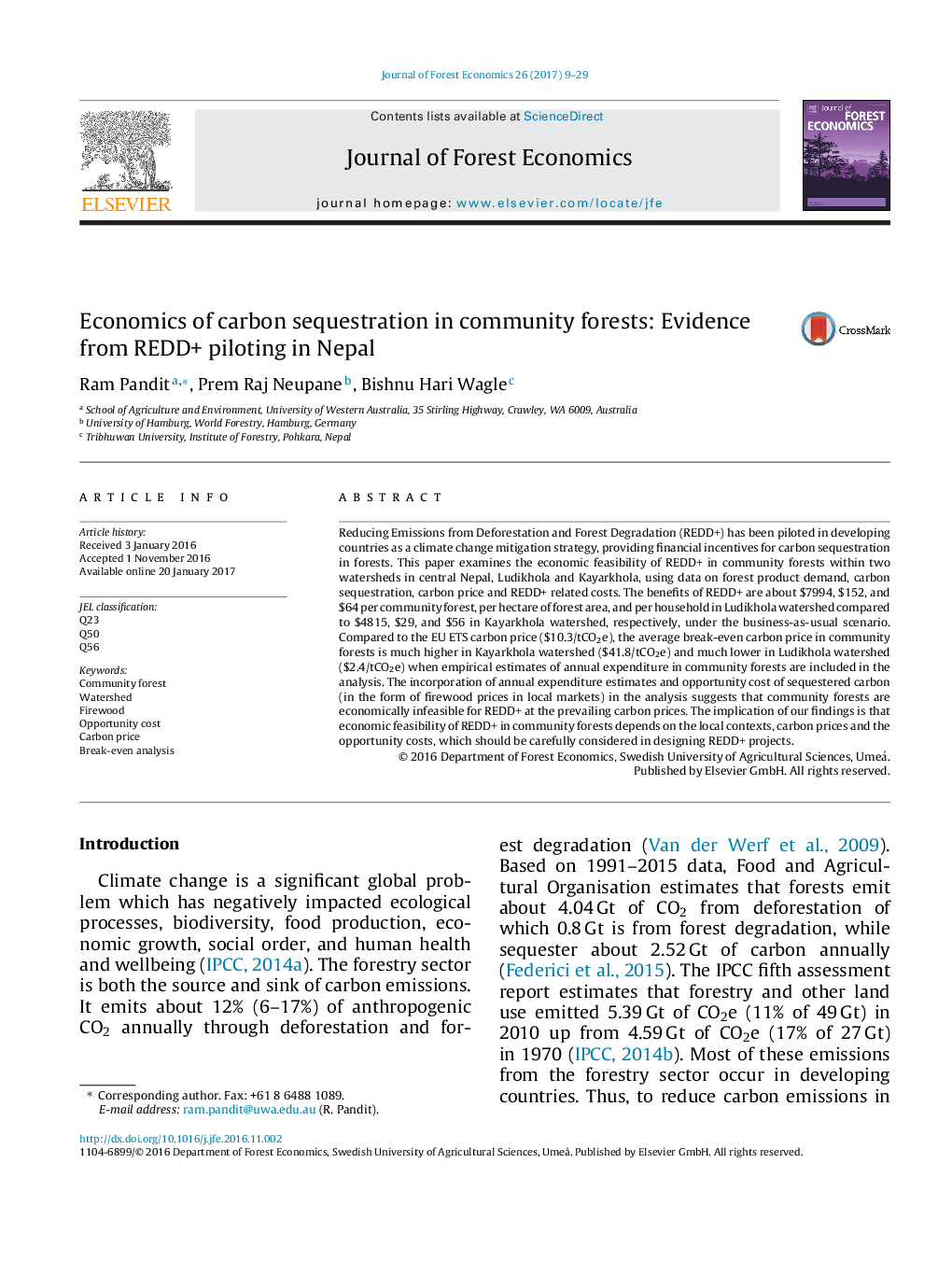| Article ID | Journal | Published Year | Pages | File Type |
|---|---|---|---|---|
| 4759853 | Journal of Forest Economics | 2017 | 21 Pages |
Reducing Emissions from Deforestation and Forest Degradation (REDD+) has been piloted in developing countries as a climate change mitigation strategy, providing financial incentives for carbon sequestration in forests. This paper examines the economic feasibility of REDD+ in community forests within two watersheds in central Nepal, Ludikhola and Kayarkhola, using data on forest product demand, carbon sequestration, carbon price and REDD+ related costs. The benefits of REDD+ are about $7994, $152, and $64 per community forest, per hectare of forest area, and per household in Ludikhola watershed compared to $4815, $29, and $56 in Kayarkhola watershed, respectively, under the business-as-usual scenario. Compared to the EU ETS carbon price ($10.3/tCO2e), the average break-even carbon price in community forests is much higher in Kayarkhola watershed ($41.8/tCO2e) and much lower in Ludikhola watershed ($2.4/tCO2e) when empirical estimates of annual expenditure in community forests are included in the analysis. The incorporation of annual expenditure estimates and opportunity cost of sequestered carbon (in the form of firewood prices in local markets) in the analysis suggests that community forests are economically infeasible for REDD+ at the prevailing carbon prices. The implication of our findings is that economic feasibility of REDD+ in community forests depends on the local contexts, carbon prices and the opportunity costs, which should be carefully considered in designing REDD+ projects.
